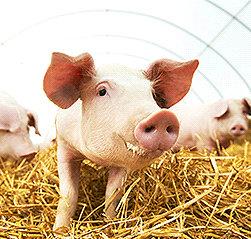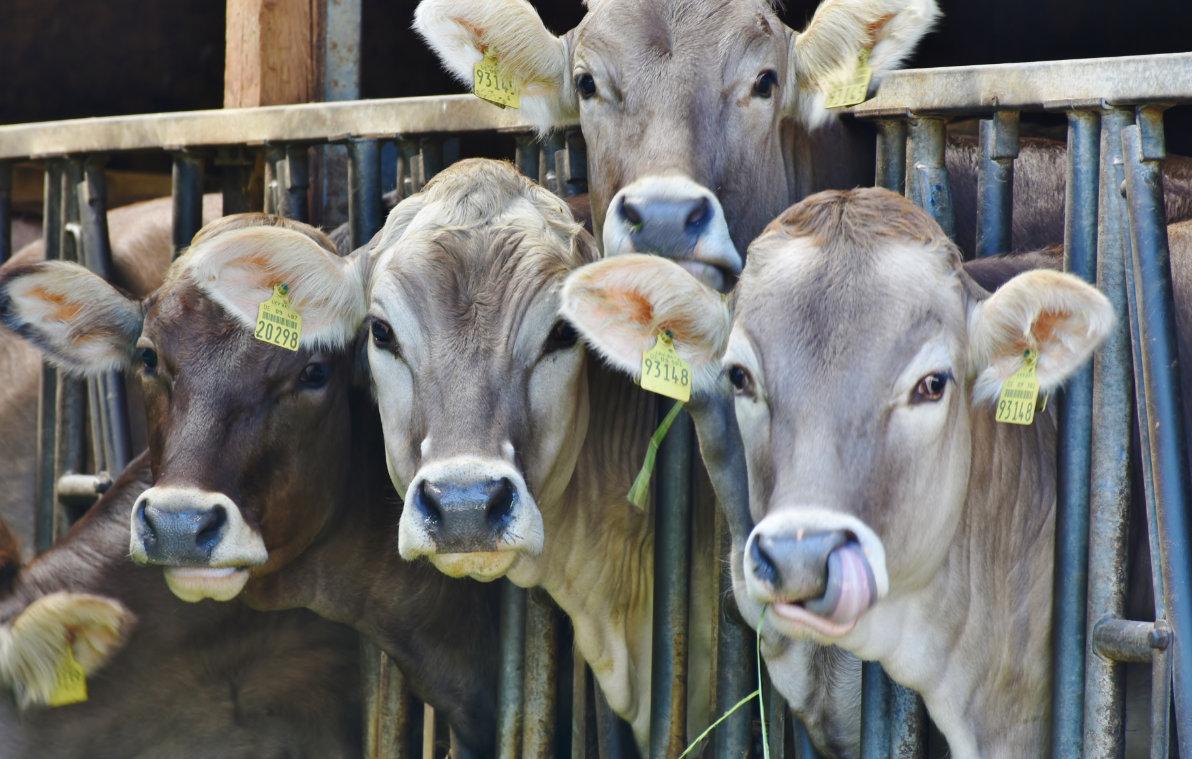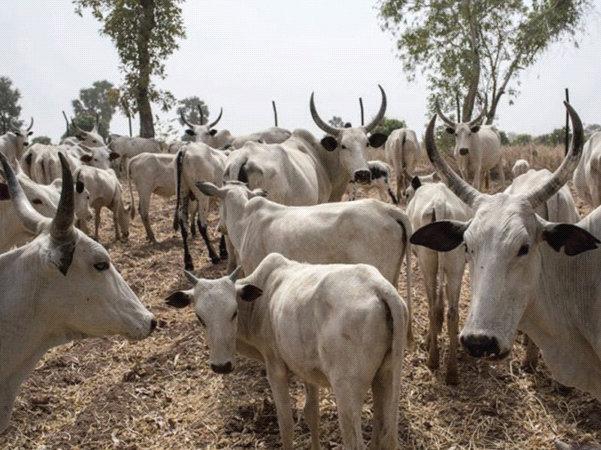
12 minute read
Safety key in controlling African swine fever
The latest outbreak of the African swine fever (ASF) in Uganda has been depressing and dramatic. Whereas farmers are still counting the losses from the unpredictable Covid-19 and its related lockdown measures, the outbreak of the ASF announced first in northern Uganda is especially depressing. Pig farming is one of the fastest growing livestock activities in the peri-urban areas and among smallholder farmers.
Uganda has the largest and fastest growing pig production in eastern Africa with the pig population standing at 3.2 million as of the 2008 census. But ASF is hampering the development of the pig industry. Kitgum District has reported 500 new outbreaks with further deaths of between 700 to 1,500 in Otuke District. According to a study published in the Journal of Veterinary Medicine in 2013, the African swine fever is ranked as the most important disease of pigs that mostly occurs during the dry season, as a result of movements due to trade and restocking as the major risk factors.
Advertisement
Big threat
ASF is a highly fatal viral disease of domestic pigs and can cause mortality of up to 100 per cent of affected pigs. The transmission of the African swine fever is both direct and vector-borne. The disease is highly contagious and is transmitted by direct contact between infected pigs and susceptible ones or by contact with or ingestion of infectious secretions. The virus is highly resistant in tissues and the environment, contributing to its transmission over long distances through contaminated material, vehicles, or visitors to pig farms. Despite being a deadly disease of pigs and wild boar, it does not affect people but has severe consequences for those who are reliant on pigs as food and income.
As a result of the outbreak, pork prices are expected to rise as production is limited to keep pace with demand. But secondary industries that deal with the supply of feed ingredients will also feel the pinch.
Diagnosis
The African swine flu can be suspected based on clinical signs but animal health experts assert that confirmation must be made by laboratory tests because signs of ASF are very similar to classical swine fever. Affected animals with acute symptoms have high fever, hemorrhages and high morbidity and mortality rates. The main clinical signs are fever, loss of appetite, lack of energy and sudden death with few signs beforehand. Affected pigs normally die of pneumonia while survivors are chronically emaciated, have stunted growth, and bony swellings on the skin, among other signs. Other signs can include vomiting, diarrhoea, red or dark skin, particularly on the ears and snout, discharges from the eyes and nose, laboured breathing and coughing, abortion in pregnant sows, weakness and unsteady gait.
Safety first
Currently, there is no approved vaccine and treatment options for ASF and experts caution that emphasis should be put on practising good biosecurity at the farm level. This, they argue, is essential for reducing the likelihood of an ASF outbreak. These measures are primarily aimed at preventing entrance of infection into the farm.
According to Joseph Musisi, a mobile veterinary officer at Elite Veterinary Clinic, the recommended measures are limiting the number of visitors to a minimum and making any [visitors] that enter your pig sty to change into clothing and boots that are kept on the farm.
He explains that feeding pigs on kitchen scraps puts them at risk of contracting the disease. “It is important to be cautious after visiting any premises where there are pigs. Therefore, immediately after you return, change or clean your clothes thoroughly,” he advises.
Sanitary measures including early detection, culling and disinfection as well as movement controls. According to the World Organisation for Animal Health (OIE), most times the soft tick vector should also be considered in the control programme. Animal health experts are concerned that although the desired interventions of biosecurity yield positive outcomes, they result in reduction of farmer profit margins making commercial pig rearing difficult. This is partly the reason why sometimes farmers may be unwilling to adopt biosecurity practices aimed at solely controlling African swine fever outbreaks.
Advice
Currently, there is no approved vaccine and treatment options for ASF and experts caution that emphasis should be put on practising good biosecurity at the farm level.
F O O T- A N D - M O U T H D I S E A S E : L I V E S T O C K M O V E M E N T B A N L I F T E D I N K AY O N Z A
Movement and sale of livestock including cows is now allowed in Kayonza District after the Ministry of Agriculture and Animal Resources lifted a ban that was imposed on livestock in the District over foot-and-mouth disease. The ban had been placed on the movement of cattle, pigs, goats, and sheep for any reason including breeding, selling or slaughter. According to a statement that was signed by the Minister of Agriculture and Animal Resources, Gérardine Mukeshimana on Friday, March 19, 2021, the decision was based on factors including a report of a team that monitored the implementation of measures that were taken in order to tackle the disease among cows kept in Mucucu Village, Buhabwa Cell, Murundi Sector of Kayonza District. The report findings indicated that 21 days had elapsed after the last cow infected with the disease was removed from the livestock.
According to the law of 2008 determining the prevention and fight against contagious diseases for domestic animals in Rwanda, the area suspected to be infected with foot-and-mouth disease is considered as non-infected when 21 days have passed after the last infected animal is no longer among livestock. Foot-and-mouth disease (FMD) is highly infectious and deadly to livestock. It affects clovenhoofed animals – those whose hoof is split into two toes, such as cattle, goats, and sheep. According to the UN Food and Agriculture Organization (FAO), salivation, fever, mouth and foot lesions are the most frequently noted clinical signs of FMD, and are followed by the development of mouth and foot lesions and lameness.
Speaking to The New Times, Solange Uwituze, the Deputy Director-General of Animal Research and Technology Transfer at Rwanda Agriculture Board (RAB) 134 cows were found sick out of 695 cows concerned from 18 farms [in the affected area]. “Sick cows were removed from the farms and slaughtered,” she said, indicating that no other animals were affected, except cows.
Containing the disease
Uwituze said that among activities that were carried out to contain the disease, there is imposing the quarantine, screening for diseased animals, both clinically and in laboratory and remove them from the farm, as well as vaccinating all cows in highrisk zones.
Earlier, Uwituze encouraged farmers to vaccinate their animals against the disease because it is the only remedy, indicating that at least 16,000 cows out of the total 17,000 in Murundi Sector had been vaccinated. She pointed out that the vaccine against the disease was free because the cost
was covered by the Government.
Others are the protection of the area where sick animals were located, and mobilisation of farmers in prevention against FMD and other diseases.
Going forward, efforts to protect livestock from the disease include to strengthen the epidemiological surveillance of FMD and other diseases while engaging farmers to continue guarding against the disease and other diseases.
The law of 2008 determining the prevention and fight against contagious diseases for domestic animals in Rwanda provides that for public interests and with a view to stop the spreading of the foot-and-mouth disease, the management of the entity in charge of animal resources development may order that all infected animals or suspected to be infected be slaughtered and the owner can be given compensation. It should base that on a report by the District authority.


Saving Nigeria’s Livestock Sector From Insecurity
Recently, the Minister of Agriculture and Rural Development, Mallam Sabo Nanono, revealed that the ongoing crisis between herders and farmers would affect livestock’s contribution to the country’s Gross Domestic Product (GDP), TAIWO HASSAN reports
Indeed, Nigeria is currently experiencing her biggest challenge in the livestock sector, no thanks to clashes between Fulani herders and local farmers. The crisis is contracting the economy as livestock sector has been in an unstable condition for a while now, thereby threatening food security in the country’s economy where agric sector plays a critical role.
Turmoil
Besides the herder-farmers’ crisis, the country’s livestock sector has also been affected by COVID-19 outbreak, as well as the lack of support from stakeholders. Recall that at the peak of the recent land border closure, it was difficult for the country’s livestock farmers following the exorbitant import duties on animal products and their derivatives in the face of obvious comparative advantage of local feeds, as the practice was unsustainable. Reacting to the issue, the Chief Executive Officer (CEO), Nigerian Institute of Animal Science (NIAS), Prof Eustace Iyayi, told New Telegraph that “the growth of Nigerian animal husbandry has been stunted, aggravated by COVID-19 and the lack of necessary support despite a large number of trained animal scientists, with 6,000 registered with the Nigerian Institute of Animal Science and the huge potential for youth employment and, indeed, national economic rebirth.” Iyayi noted that animal scientists believed that in order to arrest youth restiveness and perennial farmer-herder conflict post-COVID-19, there was need for application of technology and innovation to promote production, processing and agricultural trade through effective competitiveness, market access and penetration that will positively affect the national economy.
Prospects
Nigeria’s population is projected to hit 400 million by 2050, from the current 190 million. This is likely to create a huge demand for livestock and livestock products, opening up opportunity for growth of the country’s $12 billion animal feed market. The potential for an expanded animal feed sector in Nigeria is huge, underpinned by the
current high livestock numbers now estimated at 10 million birds, 22 million cattle, 40 million sheep and 50 million goats. The United States Department of Agriculture (USDA) estimates Nigeria’s poultry meat consumption will increase 10- fold by 2040, “assuming moderate feed costs, while domestic poultry production is expected to increase by eight billion eggs and 100 million kilograms of poultry meat per annum.” The department estimates Nigeria’s annual fish consumption to be two million tons, with over 20 per cent supplied through landbased aquaculture production. Currently, Nigeria is on the throes of streamlining the her feed industry after the December 2017 promulgation of new guidelines on the formulation, production, distribution of the products spearheaded by the Governing Council of NIAS and the Ministry of Agriculture and Rural Development. NIAS has gazetted the new feed industry regulations, which the institute says will enable livestock producers “achieve high levels of performance through use of consistent good quality feed.” The rules, NIAS insisted, would support efforts to “protect health of consumers of animal products and safeguard health of animals and ensure quality animal feed distribution from feed-mill to farm level and that Nigeria markets animal feed product that meets national and international standards.”
Opportunities
The United States Department of Agriculture (USDA) said Nigeria’s animal feed segment remained underdeveloped, mostly due to high production costs, inadequate public power supply, infrastructure deficiencies, high cost of borrowing, high inflation rate, weak consumer demand, and a concern for security in some parts of the West African country.
Most poultry, aquaculture and other livestock operations in Nigeria spend about 70 per cent of their operational costs on feed, indicating its huge demand in the sector,” USDA said a report. Over the last five years, Nigeria’s animal feed sector has continued to attract both local and foreign investors and it is expected to remain the leading grain user in the country. Despite the huge opportunities available in the sector, the Fulani herders and Nigerian farmers crisis across the six geo-political zones is causing setback to achieving these potential easily.
Economic implications
However, last week, the Federal Government expressed its worries that the country’s livestock industry worth over N33 trillion was being depleted by the continued clashes between herders and farmers in the country. The Minister of Agriculture and Rural Development, Alhaji Sabo Nanono, had at the inauguration of the 5th Council of NIAS in Abuja recently, expressed this concern, saying that governments at all levels must take proactive measures to save the livestock subsector from total collapse. Nanono noted that the idea of assembling scientists from different fields of animal science into the council was meant to reposition the livestock industry, reduce and find lasting solutions to issues relating to animal development in the country. He also called on all stakeholders to proffer solution to herders and farmers crisis. The agric minister lamented that Nigerians have allowed sentiments and emotions to becloud their sense of reasoning in tackling the problem. He claimed that Funlani herders, who carry sticks, cutlasses and guns, were doing that to protect cattle from snakes and other dangerous animals contrary to speculations that they use them to instigate violence. Nanono said: “We are in a very dangerous era in this country, particularly in the livestock sector and development of cattle. Fortunately or unfortunately, cattle form a better part of livestock development because of its size, value and mobility. I think we have allowed ourselves to be derailed by emotions and sentiments because this is an industry that forms about 60 per cent to the GDP of the agricultural sector and worth over N33 trillion. “No country in the world will play with this industry and this kind of opportunity. This is an economy of its own. Up till now, we have not known the connecting role of the rural economy of cattle. If you do not know I will tell you. I am a Fulani man and I have been in this business in the last 43 years from the cattle inherited. Now I know the better quality of cattle. “I hate to see a situation where some people will not feel safe in some parts of the country while others operate safely in other sectors of the economy. We have lost our bearing in solving this problem long time ago.”











